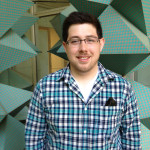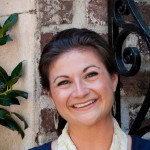June 10, 2013 The Summer Experience
Graduate Studies at the UT College of Architecture and Design
It is June in the Art + Architecture Building. You are starting your graduate education at the University of Tennessee. Maybe you have studied design before. Perhaps it is your first time. You are excited to start, but you aren’t sure what is ahead. A hint in one word: “immersion.”
The summer program at the College of Architecture and Design is an intense short duration session that consists of a drawing course, design studio and seminar work. In this time, friendships are forged, long hours are spent at work, and the foundation of your study is set.
The program is about new experiences. Beyond the curriculum, you will take a week-long field trip. Fully paid by the college, 2013’s students will travel to Manhattan. There you will experience special tours of the world-renown High Line with its manager of design, Patrick Hazari, a UT architecture alumnus, and explore the Le Corbusier exhibit, “An Atlas of Modern Landscapes,” at the Museum of Modern Art.
To prepare for what students have described as “challenging,” “addicting,” “reinvigorating” and an “evolution,” past participants share their experiences.
The Intensity
“I believe the summer program is intense for a reason. It shows your passion and your devotion to what you really love and want to do,” said Steven Whitmore, a rising second-year graduate architecture student.
Adds student Geneva Hill, “I think the type of people that get attracted to this program are intrinsically, in some sense, masochists. We love the feel of pushing ourselves beyond what even seems possible.
“At the end of the day you walk away feeling as if you’ve had an out of body experience, you had no idea that type of perseverance was part of you. You’ll shock yourself who you can be. The lack of sleep, the stress, the never ending design process – you begin to crave it. It’s a constant reminder of the possibilities for yourself.”
The Unanticipated Skills
When Jason Cole started the program he believed his greatest skills coming to UT were “technical drawing knowledge as well as building system knowledge,” yet throughout his study he believes he gained the “ability to deal with people and get things accomplished.”
“You know you can work on something so much longer, make it that much better, but you have to learn to do the best with the time constraints,” notes graduate architecture student Ryan Stechman.
“The summer program builds excellent work ethic,” adds Jared Wilkins. “By the end, students feel extremely accomplished. The summer program truly shows a student what he or she is capable of doing.”
“Throughout the summer course, I learned time management, gained a stronger work ethic, learned how to be decisive under pressure, learned how to use the resources at hand, including my peers to finish what needed to be done,” said Whitmore.
The Relationships
One of the characteristics of study at the College of Architecture and Design is its sense of community. Through the studio environment, students create relationships that both foster friendships and promote collaboration.
“While many of my peers did not know each other, and all of us come from very diverse cultural and educational backgrounds, the studio was a very communal experience,” said Whitmore.
“Because of the intensity and demand of the program, it was more dependent on using our knowledge and abilities to collectively help each other finish the task at hand, teaching and learning from each other as we go.”
With a great faculty to student ratio, students also develop relationships with their professors.
“They offered knowledge, encouragement, challenge and a complete investment in my future,” said graduate landscape architecture student Angelike Angelopolous. “I had never experienced someone so willing and determined to make me a better designer, student and overall person.”
“The diversity and incredible array of experience of the professors here is what makes this program so incredible,” notes Eric Archer, a second-year graduate architecture student. “I feel like I have learned more about design in the last 12 months here than I did in 48 months of my undergraduate program.”
The Game Changer
Making the decision to pursue a graduate education can be tough. Students will ask themselves: What does this mean for my career? Will I be able to manage life as an adult, with a job and/or family? Will there be value gained for my future?

“At this stage in my life, starting a new career path is probably one of the hardest decisions I’ve ever had to make, and also one of the easiest,” said Cole. “Architecture is in by blood, and I was doing myself a disservice by not pursuing it sooner. If it is the right thing to do, then nothing else matters.”
Adds Hill: “It’s overwhelming starting something entirely new as an adult. My undergraduate degree was entirely unrelated to architecture; I had a mortgage, a steady job, and adult responsibilities. I was taking a huge chance starting over, but I am exactly where I hoped I would be when I started the summer program. I could have just settled for what I had, but I would have regretted it always.”
The Journey Ahead
Taking on the summer program comes with some final advice and comments from past students:
“Erase any plans in your summer and prepare for the most difficult thing you’ve ever done,” said Archer. “When it is over, you will likely feel more accomplished and more rewarded than you ever have in your life.”
“Open your mind, let go of what you thought you knew and embrace this scary endeavor; things will fall into place and you won’t even know it,” adds Angelopolous. “You will work, and hard.”
Also practical advice from Angelopolous: “Wise words from Chuck Draper [her summer studio instructor]: ‘Draw more. Love thy classmate.’”
—
To learn more about the activities of our graduate programs visit and like their Facebook pages, Landscape Architecture and Architecture.
—
Images from the 2012 Summer Program. Students went to Cranbrook and Detroit for their “study week.”
[showcase slug=”retrospective-of-2012-summer-program”]
—
C O N T A C T:
Kiki Roeder, director of communications
Contributions by Geneva Hill, graduate research assistant, and George Dodds, associate dean of academic affairs and research




